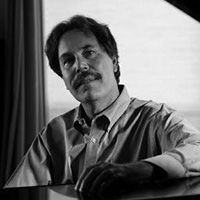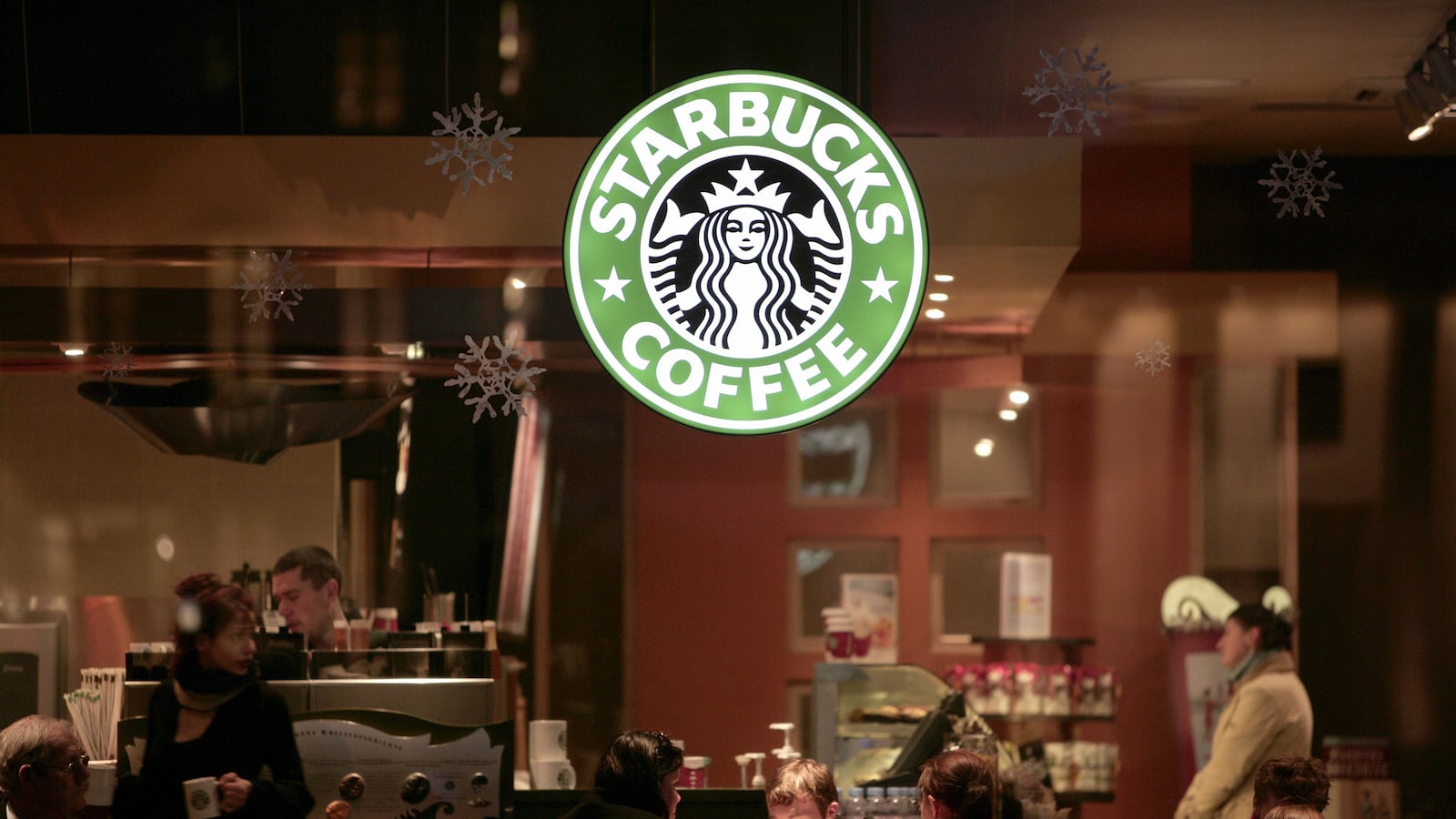When you hear jazz, do you think about coffee? Okay, I don’t, but I fear I must be in the minority. Judging by the recent actions of the world’s largest vendors of your morning java, jazz must be the most highly caffeinated music of them all.

A few weeks ago, Peet’s Coffee announced the launch of its “Jazz Giants” radio station on Pandora. “Peet’s Jazz Giants reflects Peet’s Italian Roast and Espresso Forte Blend with its vigorous, full and lively swing, bebop, hard bop, cool jazz, and newer explorations,” the company proudly proclaimed. These coffee attributes, the press release explained, are reflected in the music of jazz artists such as Miles Davis, Charlie Parker, Betty Carter, and Jason Moran.
But Peet’s is late to the game. Almost a year ago, Dunkin’ Donuts told shareholders it was redesigning outlets with “earth tones and jazz soundtrack.” A special color scheme, known as “Jazz Brew,” will refresh the look of their donut outlets with dark oranges and browns, enhanced by soft lighting. Noting that the atmosphere at a a typical Dunkin’ Donuts store isn’t always cool and laid-back, CEO Nigel Travis asserted his goal of creating a “relaxed environment” with the opportunity to “listen to appropriate music.”
Of course, the leader in this jazzification of the coffee business is Starbucks, the 35-year-old Seattle chain that now boasts a staggering 20,000 outlets worldwide. This company didn’t always love jazz. Early in its history, Starbucks tried to set a European tone at its cafes, piping in Italian opera music to accompany the espresso and cappucino. But these days, Starbucks features an eclectic mix of music with a very heavy dose of jazz.
More than 60 million customers visit Starbucks per week—making this Seattle-based retailer the unrivalled leader in exposing coffee drinkers to jazz music. Does any organization do more to promote the art form? By comparison, the efforts of other advocates for the music—the National Endowment for the Arts, Jazz at Lincoln Center, and the various schools and universities with jazz programs—seem minuscule.
Timothy Jones, who previously ran a record store across the street from a Starbucks, is the visionary responsible for this great step forward for jazz. When put in charge of the music tapes played at Starbucks’ outlets, he started mixing in jazz with the classical music. “I kinda waited for Howard [Starbucks’ founder and CEO Howard Schultz] to bounce through the door one day and go, ‘What are you doing?’” Jones recently recalled. “’I’m in the store and hearing Ella Fitzgerald and you’re picking Miles Davis and this is kinda out there.’ But it didn’t happen.” Nowadays Starbucks’ competitors imitate the market leader’s soundtracks in hopes of replicating the company’s financial success. For better or worse, jazz is turning into the music you hear when you drink coffee and munch on a donut or bagel.
As a jazz historian, I marvel at how this music seems to follow me around during the course of a typical day. Just this morning, while enjoying breakfast at a chain bagel shop, I was entertained with 30 minutes of uninterrupted jazz. But I was struck as much by the song choices of this corporate eatery. I listened to music by Miles Davis, Dave Brubeck and Horace Silver—each of the tracks more than a half-century old. Later in the day, I stopped by a Starbucks, and heard a similar mix of classic jazz tunes.
None of this music came from the “smooth jazz” or “fusion jazz” categories that, according to conventional wisdom, possess crossover appeal for the general public. I heard no recent jazz releases, or any of the tracks currently in heavy rotation on the few remaining jazz radio stations. Instead, every song played during my visit was straight-ahead jazz by a dead or retired artist—indeed, the same kind of tracks I would assign students taking a jazz history course.
What’s going on here? Even as total album sales shrink, jazz shrinks faster—and now represents a tiny 2 percent of album purchases. Many high-profile jazz artists struggle to sell more than 10,000 copies of their new releases. Yet as jazz disappears from the mainstream culture, it dominates the ambiance at eateries, and especially coffee shops.
Perhaps, as a recent study indicates, jazz makes a meal taste better. Researchers at the University of Arkansas tested the impact of four types of music—classical, jazz, hip-hop, and rock—on the dining experience. Their results showed classical and rock had no impact on perceptions of meal quality. And respondents insisted that the food tasted worse when hip-hop played in the background. But jazz had a positive impact on diners’ tastebuds.
I don’t dismiss these findings, but I believe they reflect a deeper attitudinal shift among the general public—with implications beyond mere gustatory enjoyment. Jazz music, I suspect, is perceived much differently nowadays than it was a generation ago. Jazz is now a codeword for sophistication and classiness, even affluence. These associations, cultivated by marketers and business owners, may now have more impact on the art form’s survival and success than the actual sound of the music.
Some day a smart cultural historian will trace how this happened, and it will certainly be a strange and surprising story. Jazz originated as the music of the underclass and the impoverished, but these days you hear it in the background of commercials for luxury cars and other high-end merchandise. Jazz is perceived as the music of the educated—and what an amazing attitudinal change that is! When I was learning about the music, it was excluded from most schools and universities. During my 21 years of formal education, not one of the institutions I attended had a jazz studies program.
In short, jazz now possesses a prestige unprecedented in its long history. This, in my opinion, is why you hear it at Starbucks and other retail outlets. The typical customer may not buy jazz albums or attend jazz concerts, but still likes to feel smart and sophisticated. The clientele enjoy participating in the affluent ambiance that the music projects. They wouldn’t go to the coffee shop just to hear Miles Davis, but they feel better about themselves, while sipping their java, if his trumpet is playing over the sound system.
But this success also comes at a cost. As a jazz lover, I want people to embrace the music for its intrinsic qualities, not its symbolic resonance. I can’t help comparing the current status-driven prestige of jazz with its position in American culture when my father was a teenager. He loved the swing music played by big bands, and his heroes included Benny Goodman, Count Basie, and Earl Hines. There was no social cachet associated with jazz at that juncture in American history—if anything, the contrary. But he went to the dance halls where these bands played for sheer enjoyment. When I first discovered jazz, that was the same factor that made me a lifelong fan. I loved the sound of the music, its excitement and unpredictability. I still do.
Too often, nowadays, jazz is marketed as though it were a kind of nutritional supplement. “Listen to this because it’s good for you,” is the implict message embedded in so many of the jazz outreach programs. This was my biggest gripe with the Ken Burns PBS dcoumentary on jazz—a milestone endeavor that marked the only occasion during the last half-century when a large dose of jazz was presented on broadcast TV for consumption by the general public. I initially had great hopes that this 10-part miniseries would have a tangible impact on enlarging the jazz audience. But it barely moved the needle. And why? Perhaps for many reasons, but the primarily, in my opinion, because Burns was more concerned about getting people to respect jazz than to love it.
Burns succeeded in his mission, when defined in those terms, as have the many other jazz advocacy groups that have worked to legitimize the music. We in the jazz world are now impeccably respectable. Jazz musicians may need many things—paying gigs and a larger fan base, for a start—but they don’t require an image consultant. Everyone takes them seriously, maybe too seriously.
This came across loud and clear in another recent poll, conducted by 60 Minutes, which showed that 73 percent of respondents believe jazz is more important than hip-hop. Many jazz fans were puzzled by this finding, which seems incompatible with the lackluster sales figures in the genre. But the results make perfect sense when viewed in the context of the powerful new symbolism of jazz music. The audience now accepts the “cultural significance” of jazz. Alas, they don’t buy music on the basis of cultural significance.
There are many other ironies in this state of affairs. Jazz is linked in the mind of marketers with affluence, but the economics of jazz have never been worse. Jazz is now entrenched in universities, but college students make up a much smaller percentage of fans than in previous decades. Jazz helps sell millions of cups of coffee, but sales of jazz records are in dire need of a caffeine jolt. Jazz festivals flourish by tapping into this allure of jazz—but increasingly fill their stages with artists from other genres.
So even if I applaud Starbucks and other retailers for exposing the general public to jazz, I still can’t take much comfort from its prominence in these settings. Let me be blunt: I don’t want the next generation of music lovers to associate jazz with Frappuccinos and frosted donuts. And I’m convinced that there’s a lesson here for jazz advocacy groups. Face it, the battle to improve the image of the art form is over, and those who fought for respectability get credit for winning the fight. Now we need to rise to the next challenge and remind listeners how much pleasure they can find in this music. Maybe we can even convince them to check it out when they don’t have a cup of coffee in their hands.






